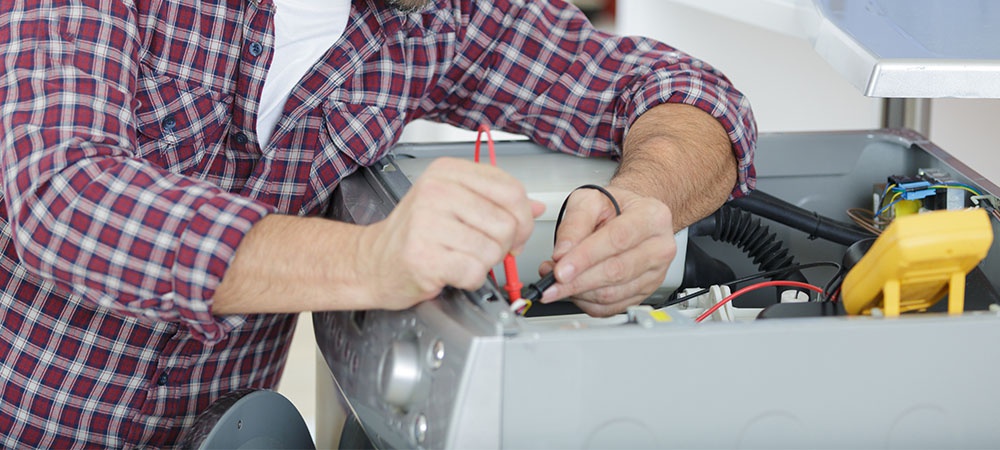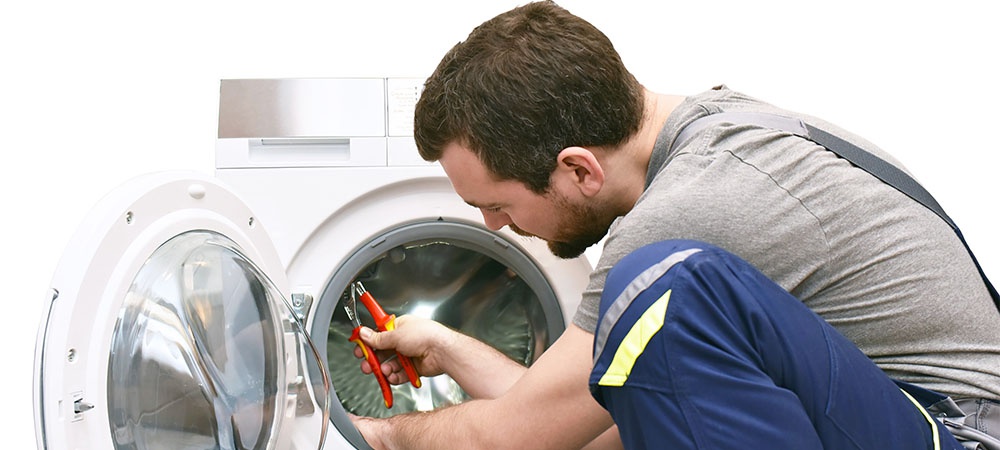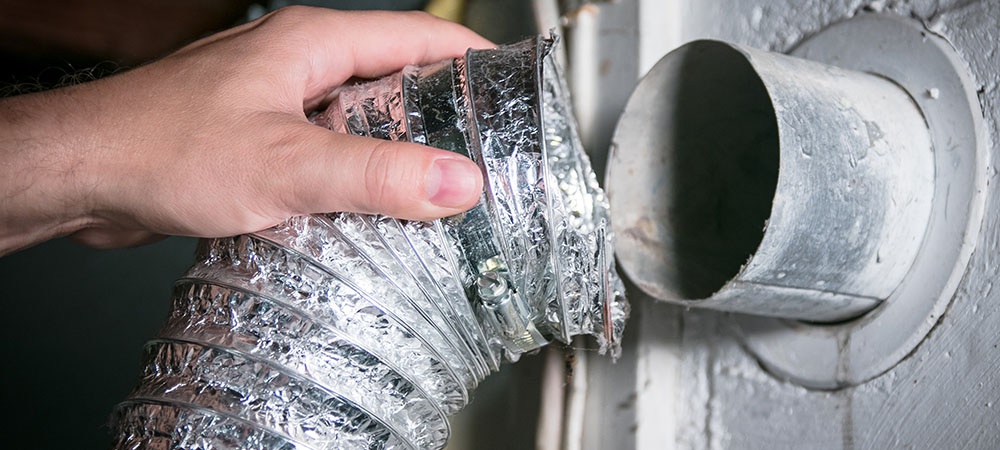A dryer is an essential household appliance that makes wet clothes dry and crisp. However, like every other home appliance, your dryer can undergo some problems. A prominent issue can be overheating.
Overheating can be a significant problem in a dryer. Overheating can lead to burn marks on your clothes. In some extreme cases, the overheating dryer can cause an electric fire. Fires can occur when lint builds up in the dryer or the exhaust duct. So, it would help if you noted the various factors that can lead to overheating.
We’ll discuss some of the causes of overheating and provide solutions. You’ll find that you can fix some of these overheating issues yourself without professional help.
Parts of the Dryer that can lead to Overheating
It helps to know how to fix your overheating dryer on your own. One way to determine the cause of overheating is to locate the part of the faulty dryer. There are several functioning parts in a dryer, and if any one of these parts malfunctions, the dryer can overheat.
We’ll look at each of these parts that can make your dryer too hot and malfunction. We’ll also be providing solutions to fixing these problems.
Faulty Heating Element
The heating element of the dryer is responsible for heating the air that enters the dryer. The air is warmed and used to dry your clothes. The heating element is the coiled wire situated inside the metal heater box.
The heating element can fail when it is damaged. The damage will lead to the heating element touching the side of the metal heater box. Therefore, once the heating element touches the heater box, the dryer will overheat.
The element will cause the heater box to stay on permanently, heating the dryer past its regular limit.
Solution
To fix the dryer getting too hot from a faulty heating element is straightforward.
- First, you need to check for an electrical current in the element with a multimeter.
- To get feedback, start by contacting the meter’s sensors simultaneously. Whether your heater box is single-coil or dual-coil, the testing procedure is basically the same.
- You must unplug the terminals from the heater box on a single-coil device before installing one probe on the metal heater box and one on a terminal.
- You must first unplug the cables from a dual-coil device. As a result, you will have access to the terminals and be able to check the connection to determine if there is continuity.
- If the continuity reading on your multimeter indicates that the element is grounded, it has to be replaced.
Malfunctioning High Limit Thermostat
The high-limit thermostat is responsible for turning off the dryer when it gets too hot to work. Hence, the high-limit thermostat should shut off the dryer at all costs under normal working conditions. However, when this high-limit thermostat malfunctions, the dryer will overheat.
A common reason for the high-limit thermostat to malfunction is when the contacts within the dryer fuse together. This fusion will cause the dryer to overheat without the high-limit thermostat doing its job of turning off the machine.
Solution
- To repair the hot dryer, take it out of the dryer and plug your multimeter probes into the exposed terminals to test it.
- Similar to the heating element, continuity is not a good sign. Also, ensure that the high-limit thermostat doesn’t lose power when it gets hot.
- Hold a thermometer to the high-limit thermostat and apply heat to the thermostat to verify this.
- This method effectively tests overheating in Samsung dryers and other prominent brands.
- For instance, if your high-limit thermostat has a rating of 250 °F, heat it past that threshold and recheck for continuity. Never forget to heat slowly.
- Your high-limit thermostat is operating correctly if the multimeter indicates no continuity so that you can address the next possible source of the problem.
- Test the continuity at a higher temperature; if it breaks, that unit might need replacing.
Faulty Cycling Thermostat
The cycling thermostat regulates the heat inside the dryer. This thermostat turns the heat on and off during a spin cycle.
The cycling thermostat can fail if the parts fuse. The fusion will prevent this part from properly alternating the on and off cycle. Hence, the dryer will constantly heat the clothes indefinitely.
Solution
- One possible solution for the overheating dryer caused by a failing cycling thermostat is removing and cleaning the component. If cleaning doesn’t work, you’ll have to move to testing.
- Take it out of the dryer and plug your multimeter probes into the exposed terminals to test it. Continuity is advantageous in this situation.
- It’s essential to check that the thermostat doesn’t lose continuity as it heats up.
- Hold a thermometer up to the cycling thermostat and use a hairdryer on the thermostat to verify this.
- For instance, if your cycling thermostat is rated for 155 °F, heat it beyond that threshold and recheck for continuity. Never forget to heat slowly.
- Your cycling thermostat is working properly if the multimeter indicates that there is no continuity.
- The unit is defective and must be replaced by a dryer repair service if continuity breaks at a higher temperature or if none exists.
Faulty Thermistor
The thermistor informs the dryer about the internal temperature within the drum through a sensor. Noticing a faulty thermistor on time is a quick way of fixing an overheated dryer without escalating the problem.
The thermistor fails when there aren’t enough signals sent to the control board. Therefore, the dryer becomes too hot to work correctly.
Solution
- If your thermistor is damaged or filthy, the electronic control board will not provide the right signals to the heat source.
- So, the first move is to clean out the thermistor.
- If the dryer is still too hot, you’ll need to check the ohm rating in the user manual.
- Then, you take a reading with your multimeter to check the range
- If the reading isn’t within the expected range of the ohm rating, you may need a new thermistor
Exhaust Vent
The exhaust vent expels the hot air after it properly heated your clothes. However, this vent can become unusually hotter than usual.
In this case of fixing your overheated dryer, there may be some blockage in the vent. The blockage will cause the vent to trap the excess hot air and heat the dryer.
Solution
- Remove the exhaust vent and check for any dirt or debris blocking it.
- Check the vent cap and ensure that it stays open when expelling the hot air.
Faulty Blower Wheel
The blower wheel cycles the warm air within the dryer and expels it out of the exhaust vent once the clothes are dry. No matter the brand of your dryer, whether it’s a Maytag dryer or some other brand, a faulty blower wheel can spell doom if left unchecked.
The blower wheel can get clogged with built-up dirt and debris. The blockage will prevent the blower wheel from properly circulating the hot air and cause the dryer to become increasingly hot.
Solution
- Remove the blower wheel and clean out any blockage to repair the hot dryer
- Check for damages on the wheel to ensure that it can continue spinning smoothly
- Replace the wheel if you notice any significant damage
Conclusion
Fixing an overheated dryer doesn’t have to be complicated. You can check the various individual parts to diagnose the source of the problem. Once you notice the faulty part, correct it and watch your dryer return to form.
However, there are some cases where the faulty part is beyond your repair. Why don’t you check out our dryer repair services? Prime Appliance Repair will have your dryer up and running again in no time. Call us today!










